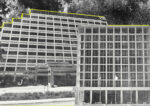Chicago’s office vacancy rate ticked slightly higher last quarter, setting another record and prolonging a slump that started when the pandemic hit.
The vacancy rate reached 23.8 percent in the final months of 2023, up from 23.7 percent in the previous quarter, Crain’s reported, citing data from CBRE.
Office vacancy records have been set in 11 of the last 13 quarters, highlighting the persisting challenges brought on by the remote-work era, which have prompted a slew of companies to undergo layoffs and reduce their footprint. The rate was 21.4 percent at the end of 2022 and 13.8 percent at the beginning of the pandemic.
Last year, rising interest rates and banking uncertainties compounded the issue, leading to a rise in foreclosures and other distress. Some landlords handed the keys back to their lenders, while others sold their assets for less than what they paid for them.
CBRE’s data highlighted a growing disparity between Class A and Class B buildings, which both stood at 18 percent vacancy at the end of 2020. Class A vacancies rose to 19.1 percent by the end of 2023, while Class B vacancies surged to 28.4 percent. This flight-to-quality trend is exemplified by law firm Neal Gerber & Eisenberg’s planned move from a Class B property on North LaSalle Street to a renovated building at 225 West Randolph Street.
Despite landlords offering incentives like cash for office modifications and lease flexibility, companies shifted toward spaces conducive to employee collaboration and productivity.
The fourth quarter saw negative net absorption of approximately 239,000 square feet, contributing to a yearly negative net absorption, which has rarely occurred since 2010, the outlet reported.
In addition, a record-setting 8.2 million square feet of sublease space became available in 2023, a stark increase from 6.8 million a year ago and 3.3 million square feet when the pandemic began.
While CBRE’s data paints a gloomy picture of Chicago’s office market, Moody’s Analytics hints at optimism, the Chicago Business Journal reported.
According to Moody’s data, Chicago’s office vacancy rate rose to 20 percent, compared to the national average of 19.6 percent.
Nationwide, net absorption plummeted to negative 18.3 million square feet, with San Francisco leading the downturn by shedding nearly 2.5 million square feet. Conversely, Chicago showcased relative resilience; the city’s minimal increase from a 19.5 percent vacancy rate at the end of 2019 positions it favorably among major metros.
“Nationally, heading into 2024, I think we’re going to have some quarters where vacancy rates might continue to climb, and we also might have some quarters where it decreases as good deals are going to be had,” Nick Luettke, Moody’s associate economist, told the outlet.
Read more



